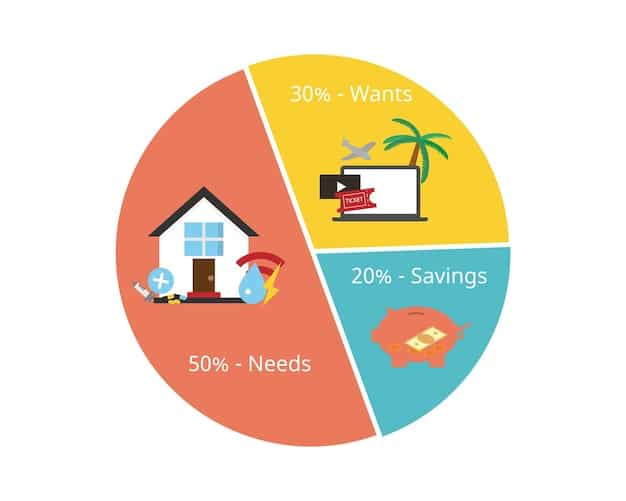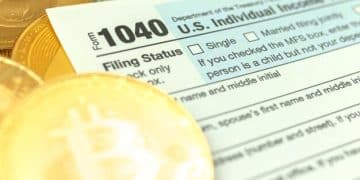Financial Planning for Homeownership: A Complete Guide

Financial planning for homeownership involves assessing affordability, understanding mortgage options, and accounting for long-term costs like property taxes and maintenance to ensure sustainable homeownership.
Embarking on the journey of homeownership is exciting, but it also requires careful financial planning for homeownership to ensure a smooth and sustainable experience. Understanding the financial aspects, from assessing affordability to navigating mortgage options and anticipating long-term costs, is crucial for making informed decisions.
Understanding Home Affordability
Determining how much you can realistically afford is the first step in financial planning for homeownership. This involves evaluating your income, debts, and expenses to arrive at a comfortable housing budget.
Several factors contribute to calculating affordability. Let’s delve into those considerations.
Income and Debt-to-Income Ratio (DTI)
Your income plays a significant role in determining how much you can borrow. Lenders typically look at your gross monthly income and compare it to your monthly debt obligations. This is known as the debt-to-income ratio (DTI). A lower DTI indicates that you have more disposable income and are less risky to lend to.
Credit Score and History
Your credit score is a numerical representation of your creditworthiness. A higher credit score generally translates to better interest rates on your mortgage. Review your credit report for any errors and work to improve your score before applying for a mortgage.
- Calculate your debt-to-income ratio to understand your borrowing capacity.
- Check your credit report and address any inaccuracies.
- Set a realistic budget that includes all housing-related expenses.

In conclusion, understanding home affordability involves a comprehensive assessment of your financial situation, including income, debts, credit score, and budgeting. By carefully evaluating these factors, you can determine a realistic housing budget and set yourself up for successful homeownership.
Exploring Mortgage Options
Mortgages are the primary financing tool for most homebuyers. Understanding the different types of mortgages and their terms can help you choose the best option for your situation. It’s an important step in financial planning for homeownership.
There are several mortgage types to consider.
Fixed-Rate vs. Adjustable-Rate Mortgages (ARMs)
Fixed-rate mortgages have an interest rate that remains constant throughout the loan term, providing stability and predictability. Adjustable-rate mortgages (ARMs) have an interest rate that can change periodically, based on market conditions. ARMs may start with a lower initial interest rate but can increase over time.
Government-Backed Loans (FHA, VA, USDA)
Government-backed loans, such as those offered by the FHA (Federal Housing Administration), VA (Department of Veterans Affairs), and USDA (U.S. Department of Agriculture), are designed to help specific groups of borrowers. FHA loans are available to borrowers with lower credit scores and smaller down payments. VA loans are for eligible veterans, and USDA loans are for rural homebuyers.
Conventional Mortgages
Conventional mortgages are not backed by the government and typically require a higher credit score and a larger down payment. These mortgages may also require private mortgage insurance (PMI) if the down payment is less than 20%.
- Compare interest rates and fees from multiple lenders.
- Determine whether a fixed-rate or adjustable-rate mortgage is best for you.
- Understand the requirements and benefits of government-backed loan programs.
In summary, exploring mortgage options involves understanding the different types of mortgages, their terms, and the requirements for each. By carefully evaluating your options and comparing offers from multiple lenders, you can find the right mortgage to fit your needs and budget.
Calculating Long-Term Homeownership Costs
Financial planning for homeownership extends beyond the initial purchase price. It’s essential to consider the ongoing costs associated with owning a home, such as property taxes, insurance, and maintenance.
Here are some of the long-term costs to consider.
Property Taxes and Homeowners Insurance
Property taxes are levied by local governments and are typically based on the assessed value of your home. Homeowners insurance protects your property against damage from events like fire, storms, and theft. Both of these expenses can significantly impact your monthly housing costs.
Maintenance and Repair Expenses
As a homeowner, you are responsible for maintaining your property. This includes regular maintenance tasks like lawn care, gutter cleaning, and appliance servicing, as well as unexpected repairs, such as plumbing issues or roof leaks. Budgeting for these expenses is crucial.
Utilities and Other Recurring Costs
Utilities, such as electricity, gas, water, and internet, are ongoing expenses that can vary depending on your location and usage. Other recurring costs may include homeowners association (HOA) fees, pest control, and landscaping services.

In conclusion, calculating long-term homeownership costs involves considering property taxes, homeowners insurance, maintenance and repair expenses, and utilities. By anticipating these expenses and budgeting accordingly, you can ensure that you can comfortably afford to own a home over the long term.
Creating a Realistic Homeownership Budget
Developing a realistic budget is an essential component of financial planning for homeownership. This involves tracking your income and expenses and allocating funds for all housing-related costs.
There are multiple factors to creating a realistic budget.
Tracking Income and Expenses
Start by tracking your income and expenses for a month or two. This will give you a clear picture of where your money is going. Use a budgeting app, spreadsheet, or notebook to record your transactions.
Allocating Funds for Housing Costs
Once you have a good understanding of your income and expenses, allocate funds for all housing-related costs. This includes your mortgage payment, property taxes, homeowners insurance, maintenance, utilities, and any other recurring expenses.
Emergency Fund for Unexpected Expenses
It’s essential to have an emergency fund to cover unexpected expenses, such as job loss or major home repairs. Aim to save at least three to six months’ worth of living expenses in your emergency fund.
- Use budgeting tools to track your income and expenses.
- Prioritize saving for a down payment and closing costs.
- Build an emergency fund to cover unexpected housing-related expenses.
In summary, creating a realistic homeownership budget involves tracking income and expenses, allocating funds for housing costs, and building an emergency fund. By following these steps, you can ensure that you are financially prepared for the responsibilities of homeownership.
Saving for a Down Payment and Closing Costs
Saving for a down payment is the biggest hurdle for many first-time homebuyers. Closing costs, which include fees for appraisals, title insurance, and loan origination, can add thousands of dollars to the upfront expenses. So financial planning for homeownership is key.
Let’s review strategies for saving.
Setting a Savings Goal
Determine how much you need to save for a down payment and closing costs. Aim for at least 5% to 20% of the home’s purchase price for the down payment. Research the typical closing costs in your area to estimate those expenses.
Automating Savings
Set up automatic transfers from your checking account to your savings account each month. This will make saving effortless and consistent.
Reducing Expenses and Finding Extra Income
Look for ways to reduce your expenses, such as cutting back on non-essential spending or finding cheaper alternatives. Consider taking on a side hustle or selling unwanted items to boost your income.
Saving for a down payment and closing costs involves setting a savings goal, automating savings, and reducing expenses. By implementing these strategies, you can reach your savings goal and achieve your dream of homeownership.
Navigating the Home Buying Process
The home buying process can be complex and overwhelming, especially for first-time homebuyers. Understanding the steps involved and seeking professional guidance can help you navigate the process smoothly and is the final stage in financial planning for homeownership.
Here are some of the steps involved.
Working with a Real Estate Agent
A real estate agent can help you find properties that meet your needs and budget, negotiate offers, and guide you through the closing process.
Getting Pre-Approved for a Mortgage
Getting pre-approved for a mortgage can give you a clear understanding of how much you can borrow and strengthen your offer when you find a home you like. It shows sellers that you are a serious and qualified buyer.
Making an Offer and Closing the Deal
Once you find a home you want to buy, work with your real estate agent to make an offer. If your offer is accepted, you will move on to the closing process, which involves finalizing the mortgage, signing the paperwork, and transferring ownership of the property.
- Find a reputable real estate agent who understands your needs.
- Get pre-approved for a mortgage to streamline the loan process.
- Conduct a thorough home inspection before making an offer.
In summary, navigating the home buying process involves working with a real estate agent, getting pre-approved for a mortgage, and making an offer. By understanding these steps and seeking professional guidance, you can navigate the home buying process with confidence.
| Key Element | Brief Description |
|---|---|
| 🏠 Affordability | Assess income, debts, and credit score to determine what you can afford. |
| 💰 Mortgage | Explore fixed-rate, adjustable-rate, and government-backed loan options. |
| 📈 Long-term Costs | Factor in property taxes, insurance, maintenance, and utilities. |
| 🏦 Savings | Save for a down payment, closing costs, and an emergency fund. |
Frequently Asked Questions (FAQ)
▼
The initial step in financial planning for homeownership is to assess your affordability. This involves evaluating your income, debts, and credit score to determine how much you can realistically afford.
▼
The main types of mortgages include fixed-rate mortgages, adjustable-rate mortgages (ARMs), conventional mortgages, and government-backed loans such as FHA, VA, and USDA loans, each with different terms and requirements.
▼
Long-term costs to consider include property taxes, homeowners insurance, maintenance and repair expenses, utilities, and potential homeowners association (HOA) fees, which can significantly impact your overall housing costs.
▼
To save effectively, set a savings goal, automate your savings by setting up regular transfers, reduce non-essential expenses, and explore options for increasing your income, such as a side hustle.
▼
A real estate agent assists in finding suitable properties, negotiating offers, and guiding you through the closing process. They can provide valuable insights and support to help navigate the complexities of home buying.
Conclusion
Financial planning for homeownership is a multifaceted process that requires careful consideration of affordability, mortgage options, long-term costs, and saving strategies. By taking the time to assess your financial situation, explore your financing options, and plan for the future, you can increase your chances of achieving sustainable and fulfilling homeownership.





